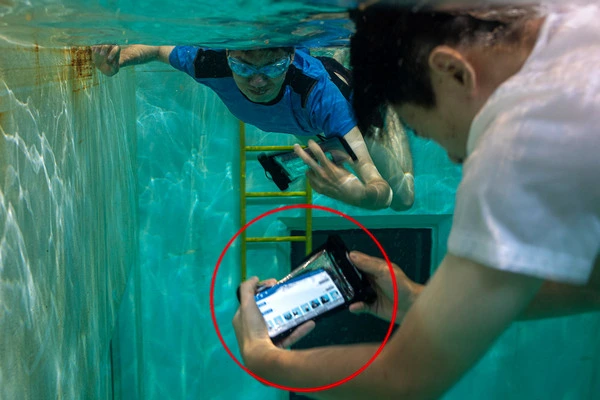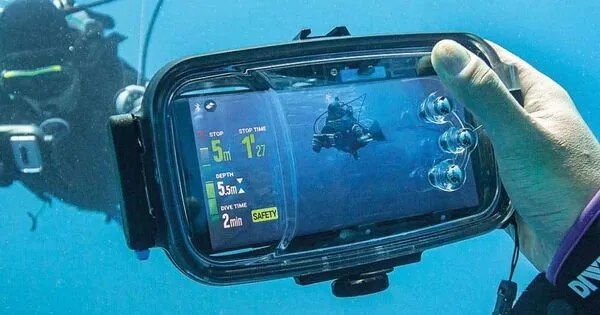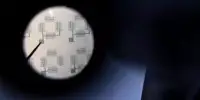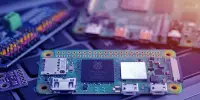AquaApp is a mobile app for underwater acoustic communication and networking that can be used with existing devices such as smartphones and smartwatches. Hand signals are the only way for millions of people who participate in activities like snorkeling and scuba diving each year to communicate safety and directional information underwater. While recreational divers may use around 20 signals, professional divers’ vocabulary can exceed 200 signals on topics ranging from oxygen level to aquatic species proximity to cooperative task performance.
These hand signals’ visual nature limits their effectiveness at a distance and in low visibility. Two-way text messaging is an option, but it necessitates the purchase of expensive custom hardware that is not widely available.
University of Washington researchers demonstrate how to achieve underwater messaging on billions of existing smartphones and smartwatches using only software. AquaApp is the first mobile app for underwater acoustic communication and networking that can be used with existing devices such as smartphones and smartwatches.
“For wireless communication, smartphones rely on radio signals such as WiFi and Bluetooth. These do not travel well underwater, whereas acoustic signals do “Tuochao Chen, a UW doctoral student in the Paul G. Allen School of Computer Science & Engineering, is one of the study’s co-authors. “We demonstrate underwater messaging with AquaApp by utilizing the speaker and microphone commonly found on smartphones and watches. People will only need a waterproof phone case rated for the depth of their dive, aside from downloading an app to their phone.”
The underwater scenario surfaces new problems compared to applications over the air. For example, fluctuations in signal strength are aggravated due to reflections from the surface, floor and coastline. Motion caused by nearby humans, waves and objects can interfere with data transmission.
Justin Chan
The AquaApp interface enables users to select from a list of 240 pre-set messages that correspond to hand signals employed by professional divers, with the 20 most common signals prominently displayed for easy access. Users can also filter messages according to eight categories, including directional indicators, environmental factors and equipment status.
In building the app, the team had to overcome a variety of technical challenges that they haven’t previously encountered on dry land.
“The underwater scenario surfaces new problems compared to applications over the air,” said co-lead author Justin Chan, a doctoral student in the Allen School. “For example, fluctuations in signal strength are aggravated due to reflections from the surface, floor and coastline. Motion caused by nearby humans, waves and objects can interfere with data transmission. Further, microphones and speakers have different characteristics across smartphone models. We had to adapt in real time to these and other factors to ensure AquaApp would work under real-world conditions.”

Other difficulties included dealing with the current’s tendency for devices to rapidly shift position and proximity, as well as the various noise profiles the app might encounter due to the presence of vessels, animals, and even low-flying aircraft.
The team developed an algorithm that enables AquaApp to optimize the bitrate and acoustic frequencies of each transmission in real time based on parameters such as distance, noise, and variations in frequency response across devices.
Here’s how it works: When one user wants to send a message to another device, their app first sends a quick note, called a preamble, to the other device. AquaApp on the second device runs the algorithm to determine the best conditions to receive the preamble. Then it tells the first device to use those same conditions to send the actual message.
To support messaging between multiple devices, the researchers created a networking protocol to share access to the underwater network, similar to how WiFi networks referee internet traffic. AquaApp’s local network can support up to 60 unique users at the same time.
The AquaApp system was tested in six locations with a variety of water conditions and activity levels, including under a bridge in calm water, at a popular waterfront park with strong currents, next to a busy lake’s fishing dock, and in a bay with strong waves. The app’s performance was evaluated over distances of up to 113 meters and depths of up to 12 meters by the researchers.
“Based on our experiments, up to 30 meters is the ideal range for sending and receiving messages underwater, and 100 meters for transmitting SoS beacons,” Chen said. “These capabilities should be sufficient for most recreational and professional scenarios.”
The researchers also tested AquaApp’s impact on battery life by running the system continuously on two Samsung Galaxy S9 smartphones at maximum volume and with screens turned on. Over the course of four hours, the app reduced the devices’ battery power by only 32%, which is within the maximum recommended dive time for recreational scuba diving.
“AquaApp brings underwater communication to the masses,” said senior author Shyam Gollakota, an Allen School professor at the University of Washington. “Today’s state of underwater networking is comparable to ARPANET, the precursor to the internet, in the 1970s, when only a few people had access to the internet. AquaApp has the potential to change that by democratizing underwater technology and making it as simple to use as downloading software on a smartphone.”















